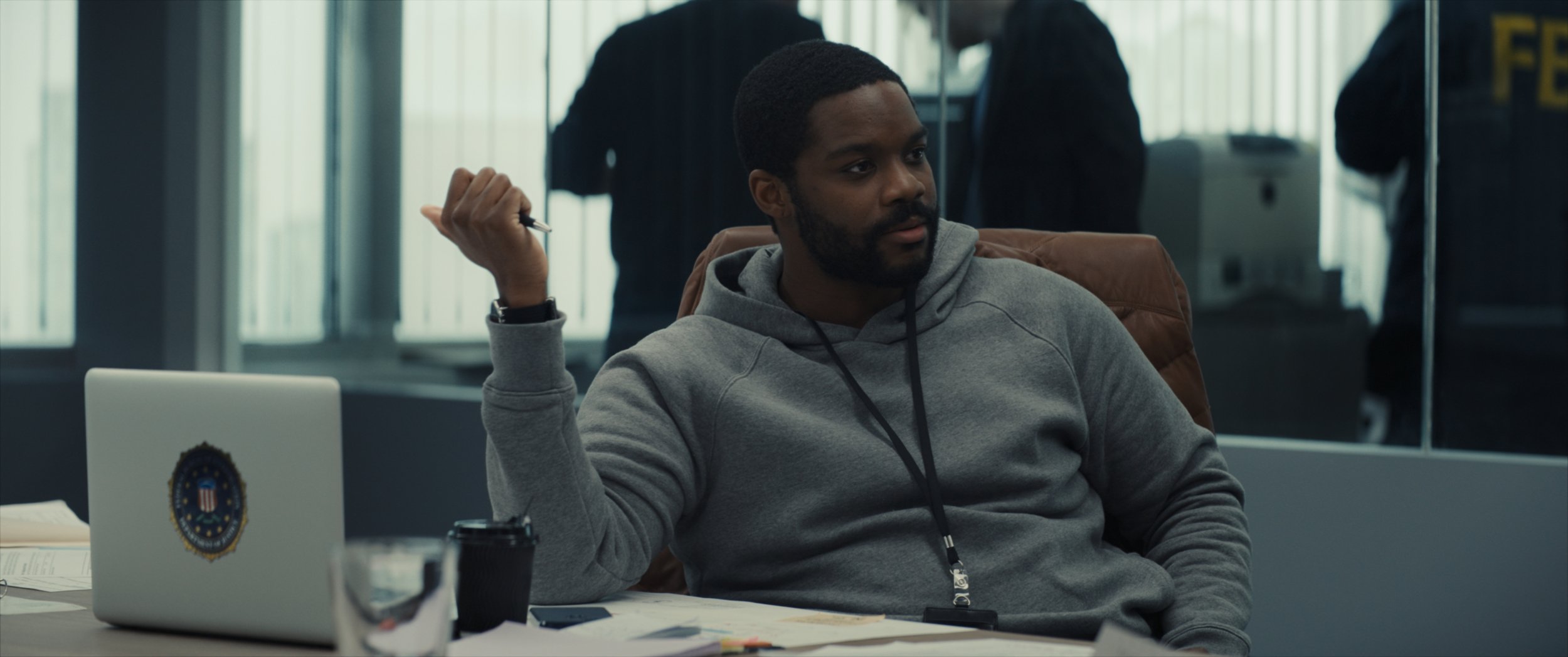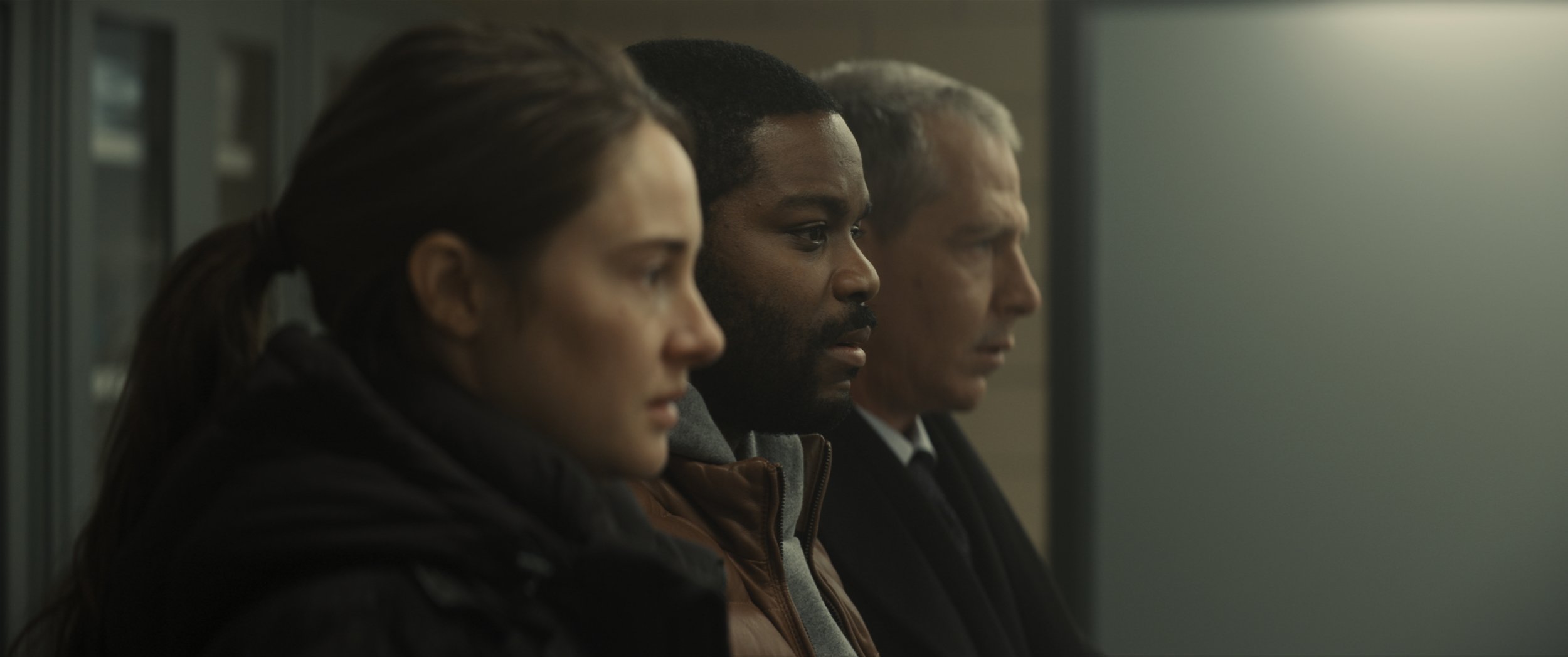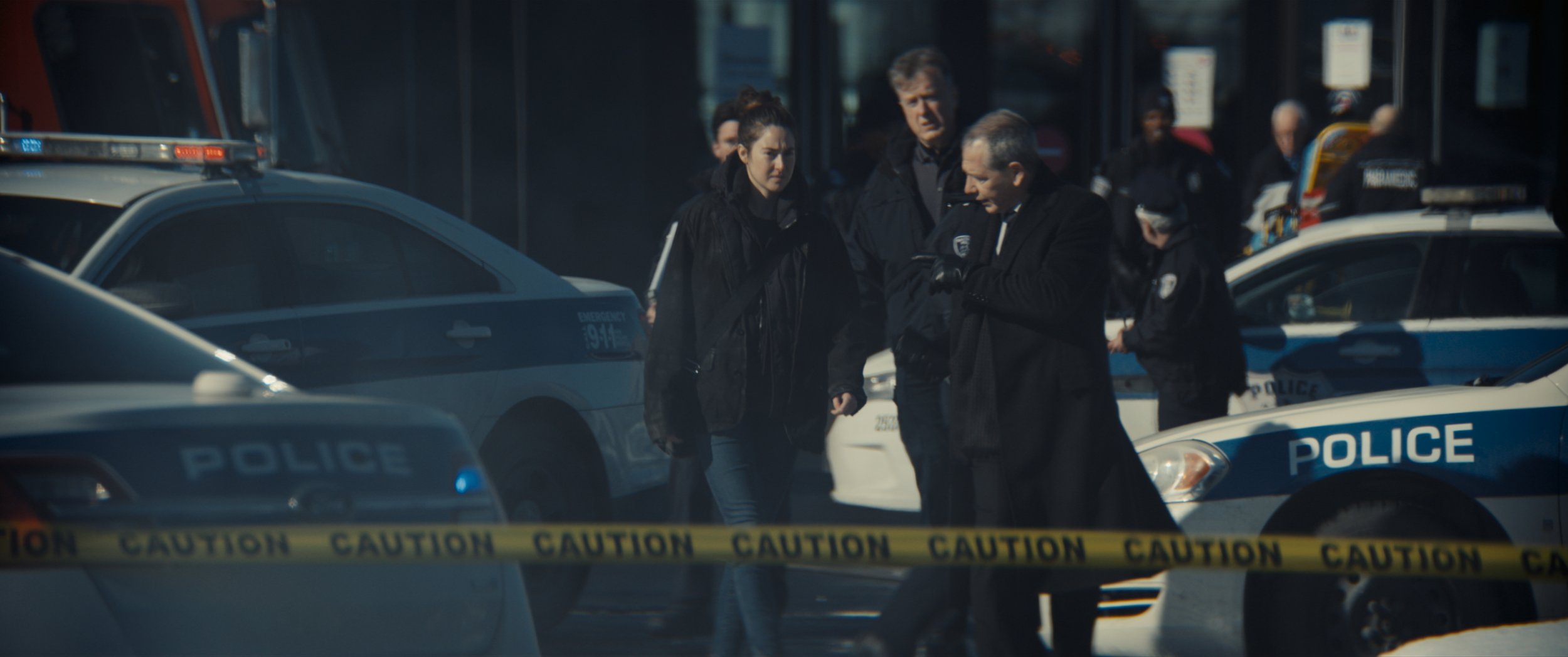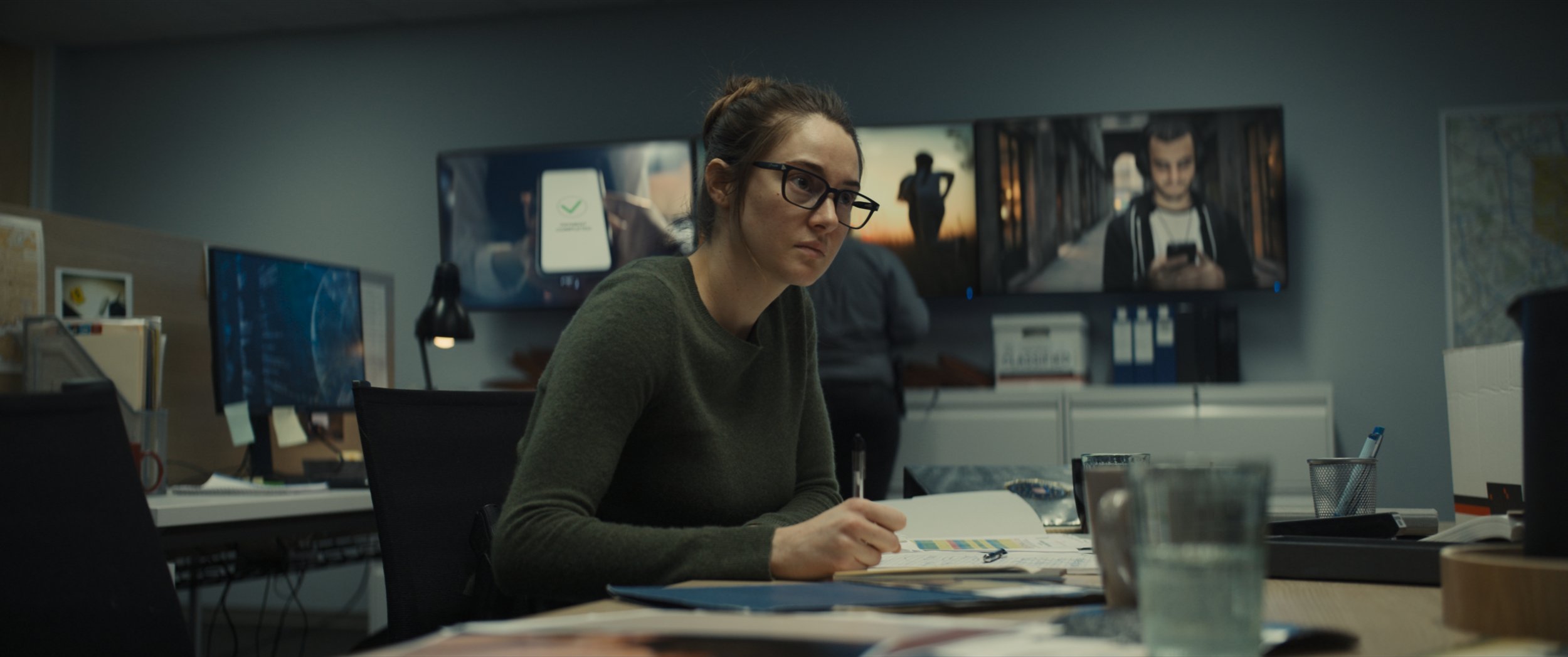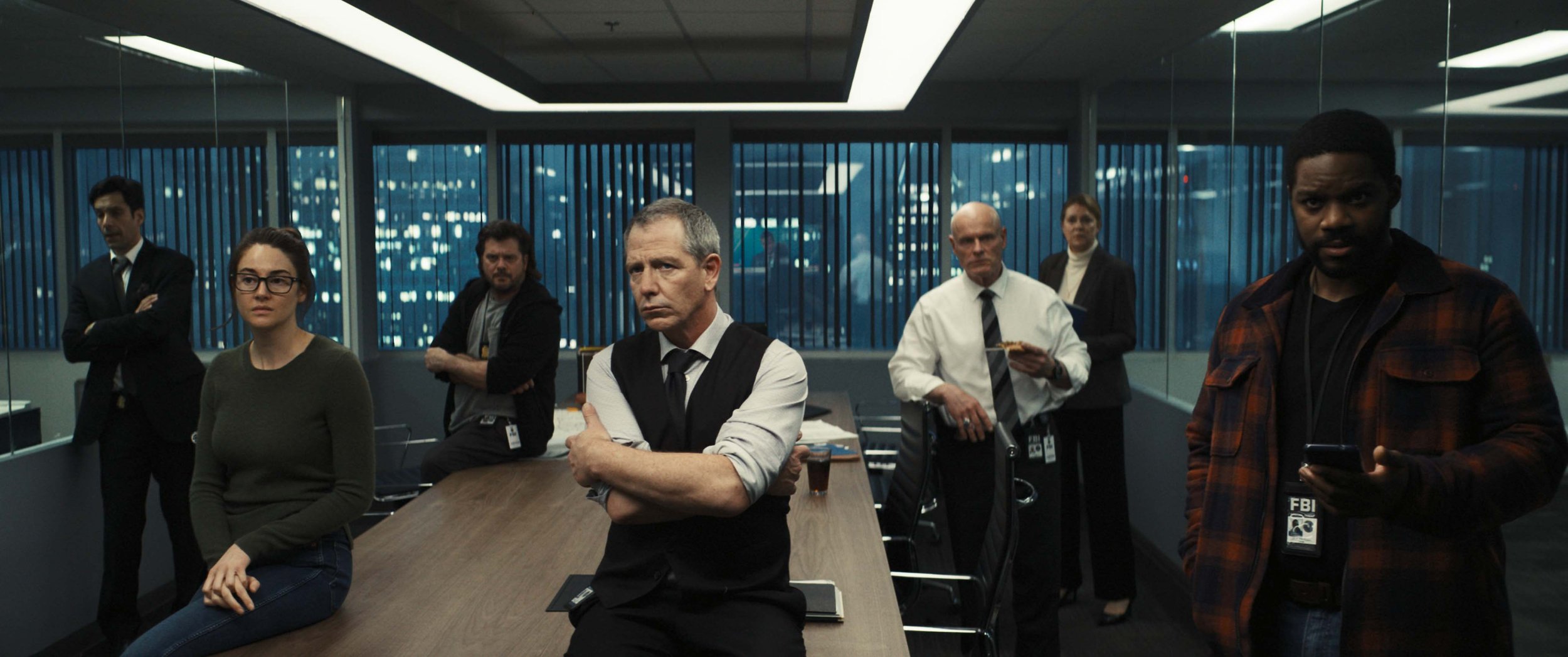MOVIE REVIEW: To Catch a Killer
TO CATCH A KILLER– 2 STARS
To Catch a Killer unravels to become one of those manhunt movies where the pursuit is better than the prize at the end. Wild Tales director Damien Szifron provides several platforms for the central law enforcement characters to pontificate the importance of what they are doing to stop the present public menace. The actors squeeze every bit of seriousness they can, and you believe their motivations and intentions. Yet, when To Catch a Killer reaches its climax and it becomes the hidden villain’s turn to reveal their intentions, the suspense shamefully evaporates.
The film opens on a harrowing active shooter incident in the city of Baltimore. To Catch a Killer presents a collection of establishing shots of general citizens partying in downtown condominiums and rooftops enjoying the New Year’s Eve fireworks. Under the audio cover of those colorful bangs, sniper shots enter these scenes and pick off random people with bloody efficiency and shocking surprise.
Panic sets in as Baltimore police, including Shailene Woodley’s officer Eleanor Falco, arrive at several scattered crime scenes. When ballistic trajectory lasers all point to the same location of origin in a high-rise building downtown, the marked apartment explodes before authorities arrive, destroying any forensic evidence.
Enter pushy FBI chief investigator Lammark, played by Professional Movie Villain extraordinaire Ben Mendelsohn. The initial assessment of the massacre is frightening. 29 people are dead. All were single-shot kills and not a bullet was missed by what appears to be an Olympic-class marksman. Even more mysterious, no pattern exists in the morgue full of victims.
LESSON #1: LET THE PROFILING BEGIN– After Lammark and his FBI team immediately take over the case from the Baltimore PD, he lays out the challenge facing them in an introduction veering close to Glengarry Glen Ross’s “Brass Balls” territory. He warns the conference room of assembled cops against picturing the typical maniac misnomers and reminds them of the wide range of personality disorders possible in the shooter. Lammark urges the gathering to keep their minds open and profiles the suspect to say, “someone loved him, someone trained him, someone sold him the gun,” and, later, “someone knows how good this guy is.”
Speaking of shrewd intellect in a crowd of grunt flatfoots, Lammark takes notice of Eleanor’s sharp logic, quick thinking, and discerning eye. He pulls Eleanor from her beat cop assignment and brings into his inner circle team alongside Agent Mackenzie (Jovan Adepo of Babylon). Lammark has a very short amount of time to find leads, assuage the politicians, quell public fears, and ultimately catch the shooter before getting fired in favor of someone else to do it better.
LESSON #2: THE OVERSIGHT WITHIN THE LEVELS OF LAW ENFORCEMENT– The bulk of To Catch a Killer is spent tumbling down a hill of failed attempts to catch the killer, even as the same shooter resurfaces back in public to strike again at an airport terminal. More often than not, the missteps are not Lammark’s fault, but those of intrusive inter-agency competition and misaligned bureaucrats who disregard Lammark’s initiatives for their own bad ideas. While criticism and hot button talking points fill the radio and TV reporting of the manhunt, Lammark knows this paranoia and invisible red tape all too well. He’s stuck following orders even when they are wrong. Any additional death toll he was strategically avoiding still lands on him.
LESSON #3: CONNECTING MOTIVATIONS WITH THE PROFILE– Cracking the personality puzzle in To Catch a Killer is greater than the forensic one, and it’s not only about the fugitive. We, the audience, suspect something that Lammark can already spot a mile away with Eleanor Falco. Internally, she’s as damaged as the man they are chasing. Her pain is fuel for her integrity. Empowering the classic retort of “it takes one to know one,” Eleanor becomes the linchpin to the chase.
The deep psychological dive undertaken from Lesson #3 creates some excellent scenes and exchanges between Mendelsohn and Woodley. They share many slick confrontations throughout To Catch a Killer that emphasize the way their characters ruminate with intensity. They are thinkers and hunters at the same time in a patient movie about dangerous impatience.
Cinematographer Javier Julia (Argentina, 1985) upholds the film’s deliberately methodical pace. His tracking camera strafes and creeps into scenes at low heights with soft footsteps matching the detectives. Szifron’s own editing stays away from silly jump scares or over-ratcheted action scenes of a thriller trying to be something it’s not. Top-shelf composer and three-time Oscar nominee Carter Burwell adds to To Catch a Killer’s taut mood with a very inauspicious score filled with ticking percussion and the stings of sinister electronica.
Letting the Rogue One and Ready Player One baddie play a forthright man-with-a-badge for a change was a nice get for Damien Szifron. Ben Mendelsohn brings an ideal asshole edge to bust balls and a stern resolve to a role that could have been played too safe on one end or too buffoonish on another. The same goes for Shailene Woodley, who is also a producer on To Catch a Killer. She has made a ponderous career playing Strong Female Characters who assert themselves to be tougher than their scripted flaws and beautiful exteriors. This one is right in her wheelhouse.
For most of the film, the overacting quotient is low. Where it all falls apart is at the end of the downward spiral when To Catch a Killer finds the real man behind the catastrophe. Played by the imposing Ralph Ineson of The Green Knight and The Witch, the perpetrator named Dean Possey is portrayed all film long as a man with zero proclivity or moral remorse. The moment Woodley’s character finds him, he inexplicably flips to show a bit of both.
That development feels preposterous and overly lucky for our protagonist. Ineson and Woodley get into a monologue showdown, where Possey tries to paint his own Lesson #3 background for what his actions have meant. The attempt lands extremely weak for emotional resonance. Instead, tension that had been accumulating all movie from a frightening unknown menace should be snapping hearts and necks.
The strength of To Catch a Killer was the background traumas of its fascinating characters and not the public ones stirring up fictional headlines. As crazy as this sounds, maybe the bad guy should have won (a la Arlington Road or other examples). A bigger punch was there to be had with a heinous act this large festering unsolved and creating more risks. Regrettably, there was a fuller movie possible that was washed away at the end.
LOGO DESIGNED BY MEENTS ILLUSTRATED (#1112)



